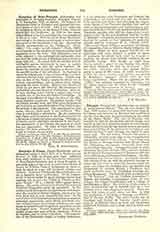

Durango (DURANGUM), Archdiocese of, located in northwestern Mexico. The see was created September 28, 1620, seventy-two years after the Friars Diego de la Cadena and Geronimo de Mendoza had established the San Juan Bautista de Analco mission in the valley of the Sierra Madre. The city of Durango was founded in 1554 by the Spanish captain Ibarra, and served at once as a center for numerous missionaries, whose efforts to convert the natives were so successful that under Philip III the Diocese of Guadalajara was divided by Paul V, and Durango was raised to episcopal rank. The first bishop, Gonzalo Hernandez y Hermosillo, devoted much time to the evangelization and spiritual welfare of the Indians. In the beginning the Diocese of Durango included New Mexico (Santa Fe), Chihuahua, and Sonora; eventually these were made independent sees. Durango was made an archdiocese by Leo XIII (June 23, 1891), and now includes all the State of Durango and part of Zacatecas, with Sonora, Chihuahua, and Sinaloa for suffragans. The first archbishop was Vicente Salinas. Among the remarkable bishops of the see were the scholarly Gorospe, to whom the city owes its canal; the famous writer Legaspi, who began the cathedral that was finished and consecrated by Antonio Zubiria y Escalante, and lately decorated anew by Archbishop Santiago Zubiria y Manzanera. The Catholic press is represented by “El Domingo”, and the “Boletin Eclesiastico”. Besides the Escuelas Guadalupanas there are two colleges, the Colegio Guadalupano and a College of the Brothers of Mary. The territory of the diocese is quite mountainous and is watered only by a few streams, but is well adapted for grazing. There are many rich mines of gold, silver, and iron. In 1900 the population of the State of Durango was 307,274, that of the city 31,092. The latter, known also as Guadiana and Ciudad de Victoria, stands picturesquely at 6700 feet above sea-level, and has several important industries and a large trade in cattle and leather.
REGINALDO GÜERECA

